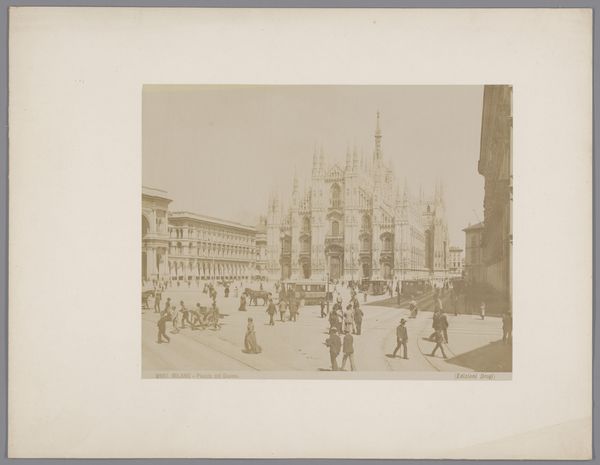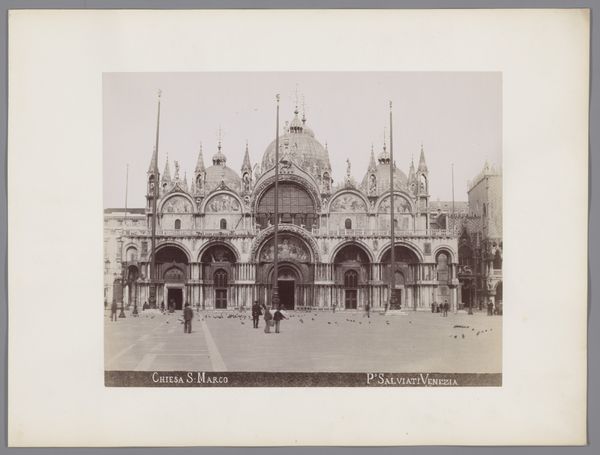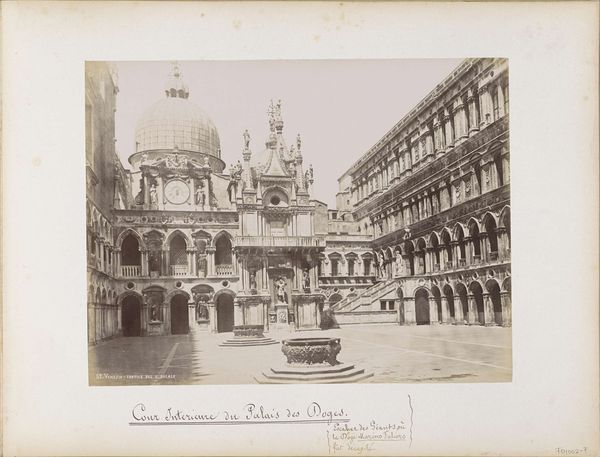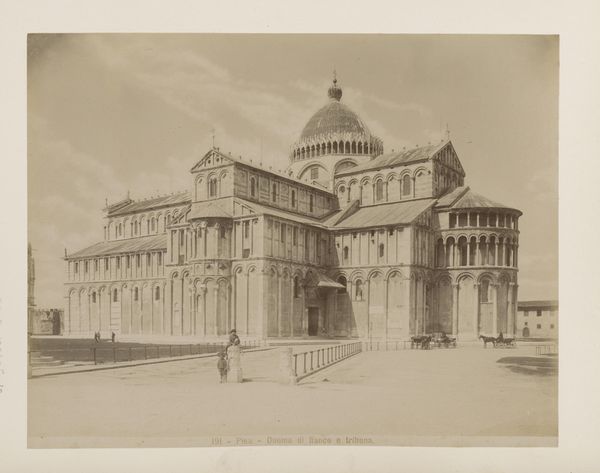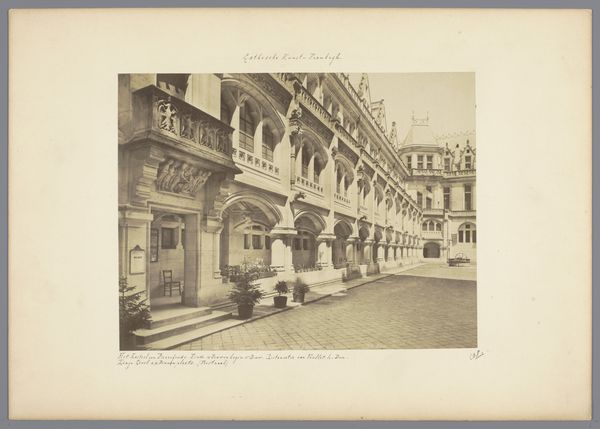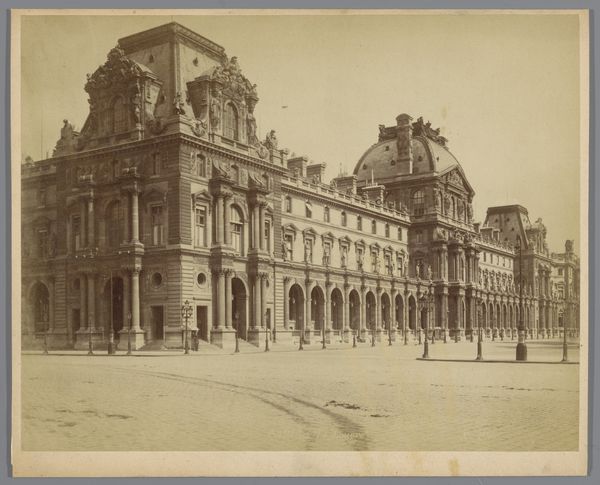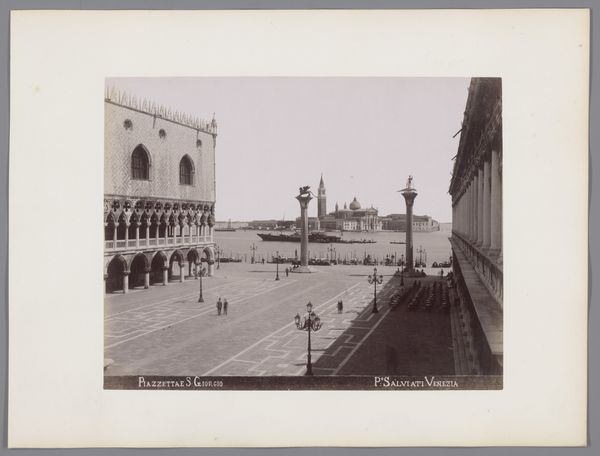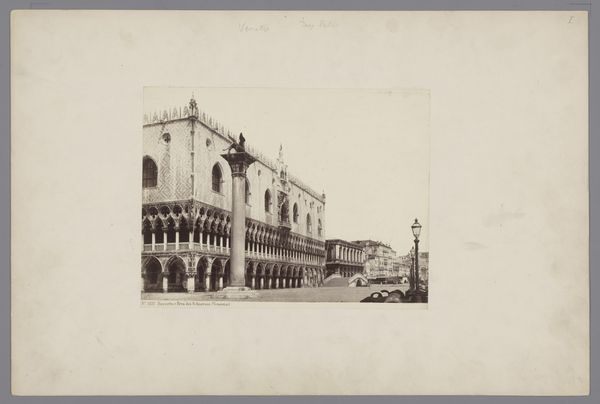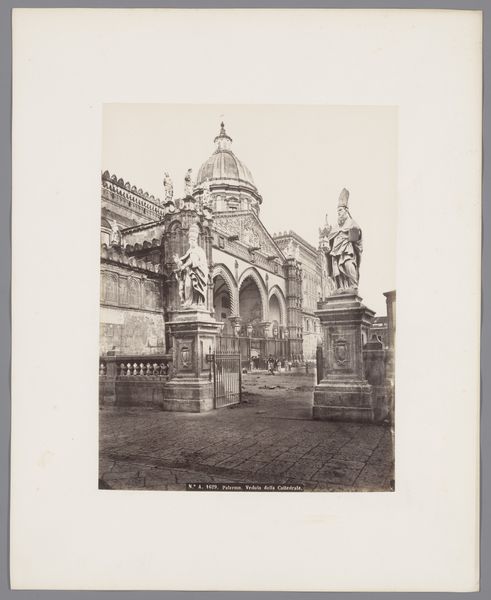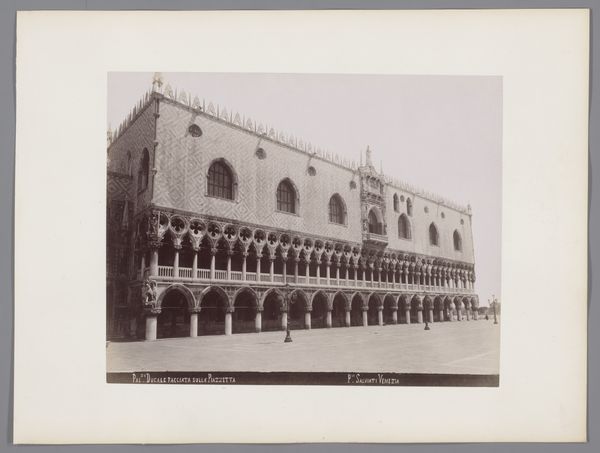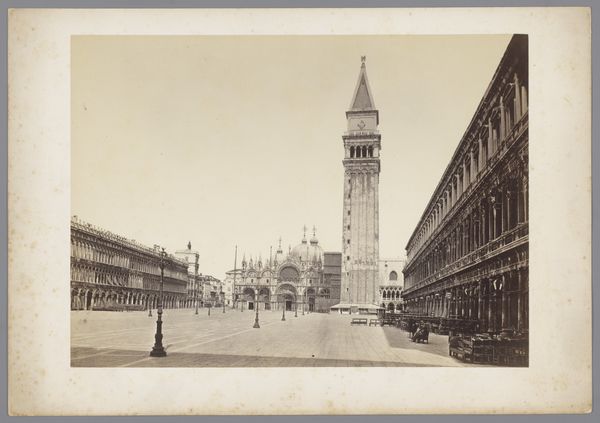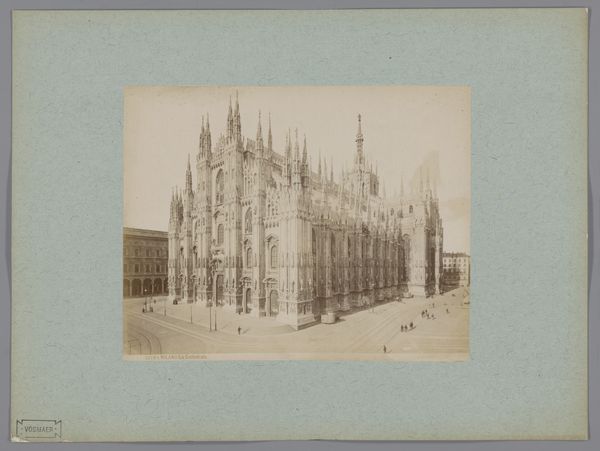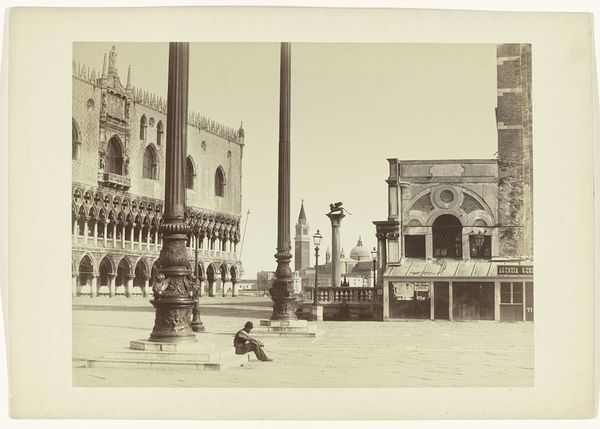
#
photo of handprinted image
#
pale palette
#
muted colour palette
#
photo restoration
#
white palette
#
unrealistic statue
#
tonal art
#
remaining negative space
#
watercolor
#
statue
Dimensions: height 196 mm, width 248 mm, height 275 mm, width 364 mm
Copyright: Rijks Museum: Open Domain
Curator: This photograph, titled "Cortile van het Dogepaleis te Venetië," was captured by Paolo Salviati sometime between 1860 and 1870. Editor: It’s austere, almost monumental, in its stillness. The stone seems to absorb all the light. I wonder what type of paper was used. Curator: That's interesting to consider. During this period, photography was rapidly evolving from a niche practice to a more widespread form of documentation and art. Salviati’s choice of subject—the Doge’s Palace—suggests an engagement with the public image of Venice and its historical importance. Editor: Absolutely. The meticulous detail—all those arches, the well in the center, even the hint of shadow across the courtyard—hints at a slower, more deliberate process than we might expect today. The very act of creating this image was surely labor-intensive, involving preparation of plates and lengthy exposure times. I wonder how many prints Salviati made. Curator: Exactly. The production context matters immensely. We must remember photography in the mid-19th century had a very different role. Images of famous buildings reinforced certain values—historical continuity, civic pride, and perhaps even a kind of political stability. How do you think it was perceived? Editor: Well, consider the market for it: surely part of a wider economy that included Grand Tour souvenirs. Capturing it here in monochrome further elevates the inherent geometry. Every carved surface has unique labor and reveals the social production of material goods, as if photography almost fossilized production relations through a chemical process. Curator: Yes, the interplay between tourism, historical representation, and photographic technology is essential. It provides a powerful lens for understanding cultural identity at this time. The photograph certainly evokes that desire for Venice in its historical and romantic imagination. Editor: Indeed, examining how this print was produced, consumed, and circulated provides an interesting viewpoint on its overall social and historical significance, doesn't it? The labor, material, image… Curator: A worthwhile venture.
Comments
No comments
Be the first to comment and join the conversation on the ultimate creative platform.

